The golf courses disappearing into the sea
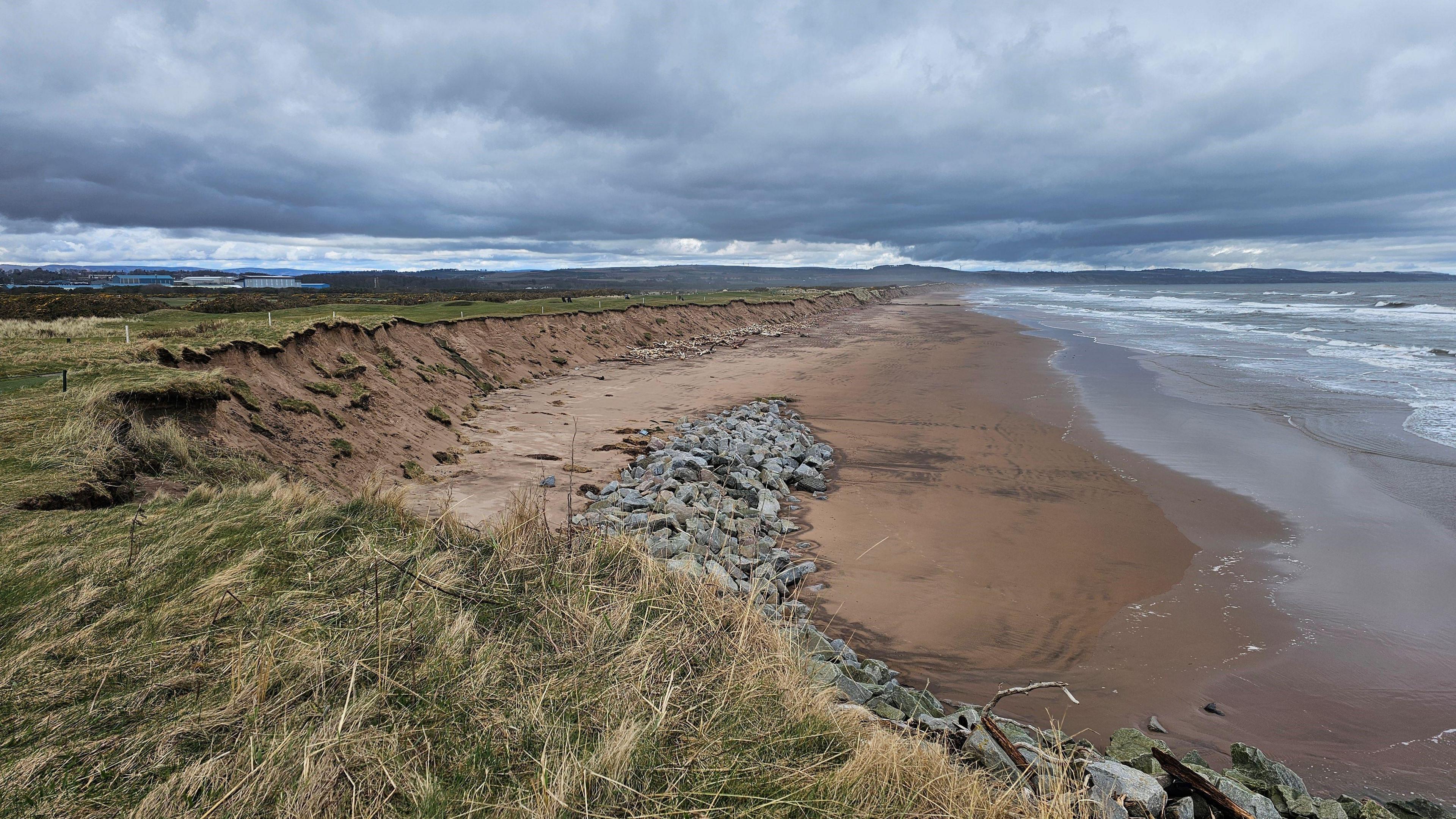
Montrose Golf club has lost seven metres to the sea in the past year alone
- Published
Some of Scotland’s oldest golf courses are in danger of disappearing into the sea due to climate change, according to those trying desperately to save them.
Recent storms and rising sea levels are forcing some to crowdfund in order to build ever higher coastal defences.
Links courses on the east coast have been particularly affected, with Montrose Golf Club losing seven metres (23ft) to the sea in the past year alone.
A total of 34 coastal courses said they were suffering due to rising sea levels, with more said to be at risk.
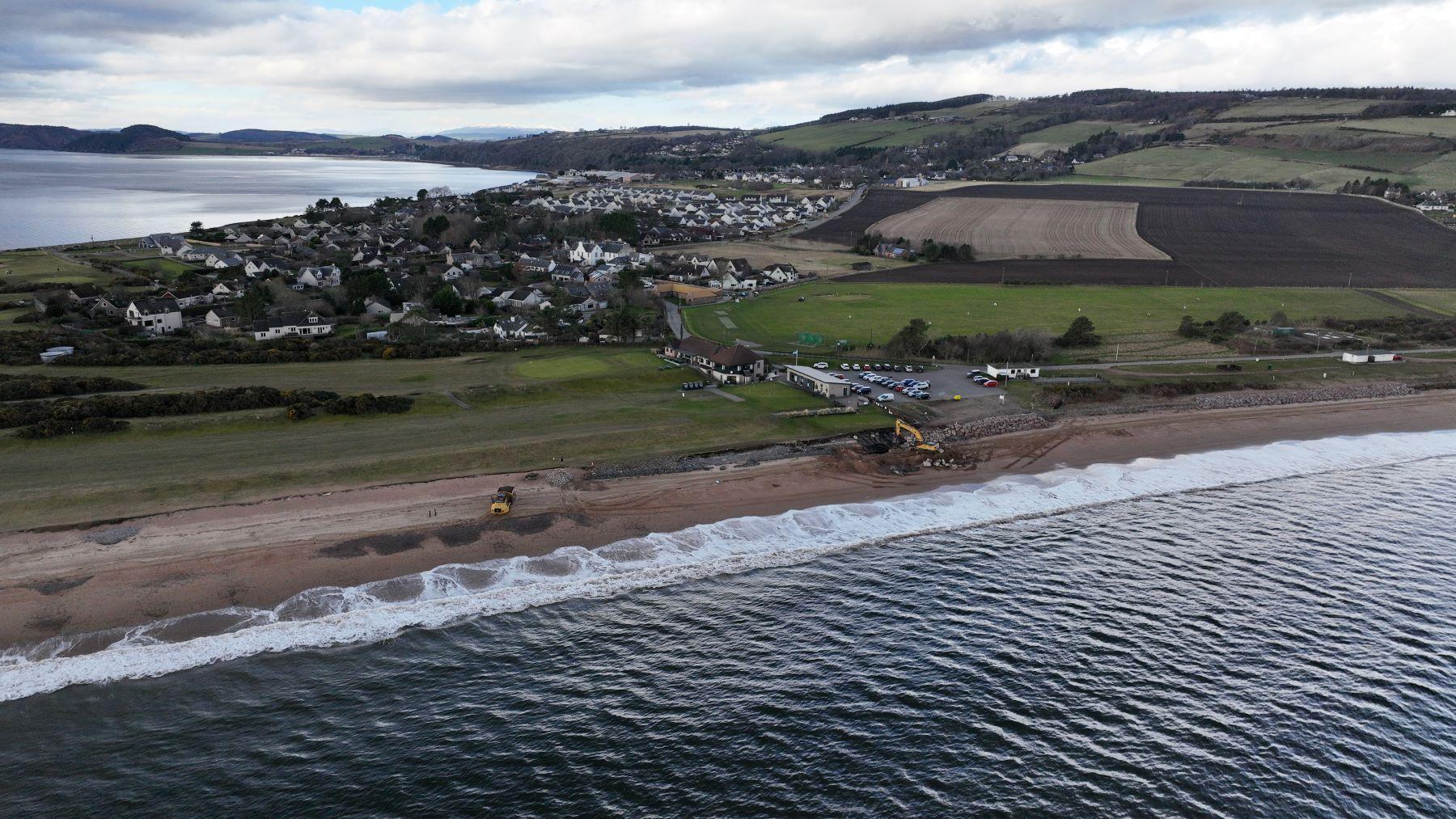
Fortrose golf club has already started to protect the first and second tees, which sit precariously close to the lapping waves of the North Sea
Fortrose and Rosemarkie golf club on the Black Isle, near Inverness, lost huge chunks of fairway when Storm Babet struck in October 2023.
Golf has been played on the peninsula since 1702 but there are fears it might not last another 50 years.
“We’ve lost about six metres (19.7ft) of ground due to the recent storms, which we have never experienced before,” said club chairman Douglas Simpson.
“Things have definitely changed in the last year or so. We’ve never experienced storms like this.
“It’s the rate of erosion, the speed at which it’s happening, that’s so frightening.
“This is a championship golf course, it’s a major attraction. We have members from all across the world and we have to protect it.”
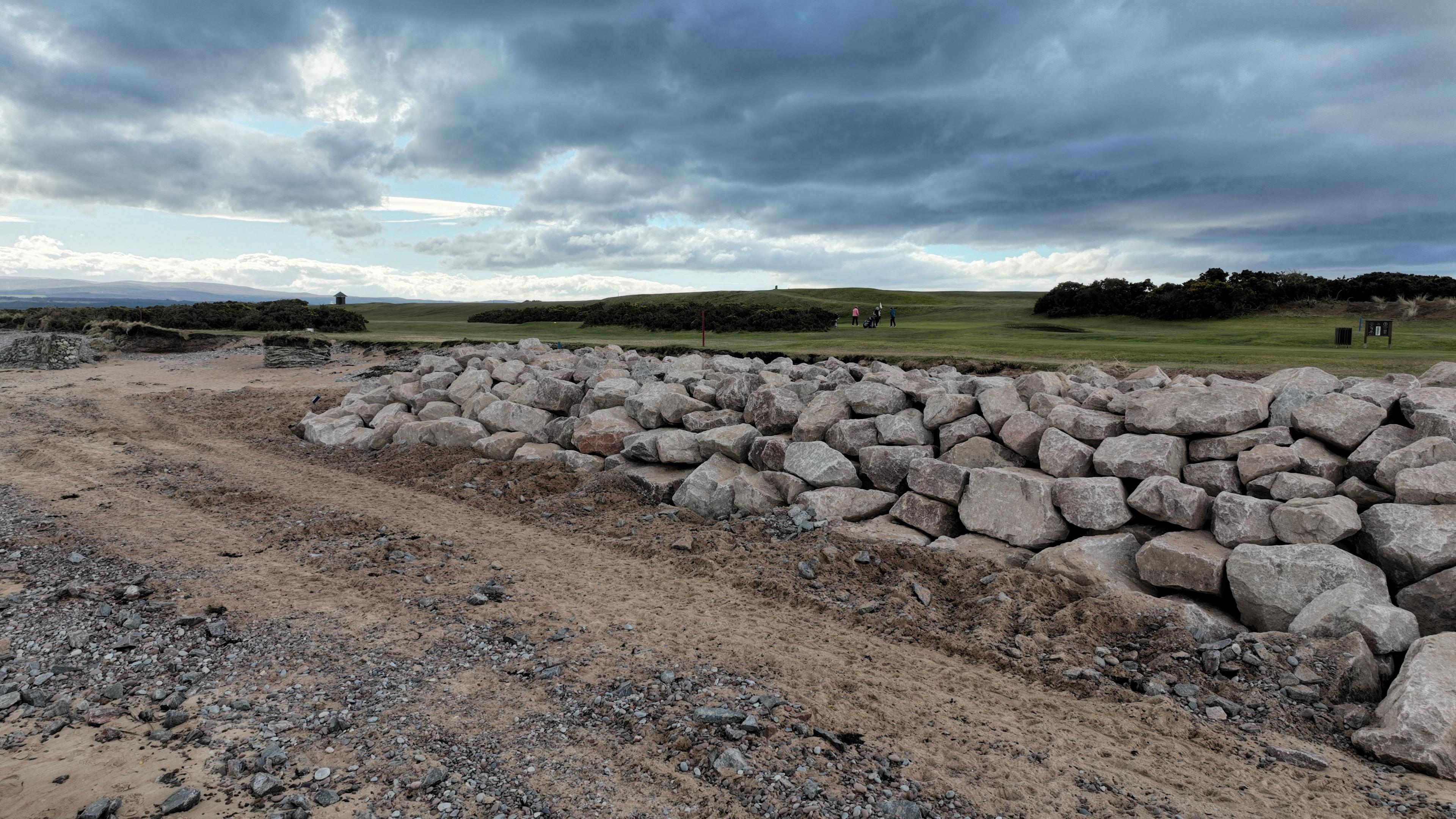
Huge boulder walls are being built to protect the course
Work has already started to protect the first and second tees, which sit precariously close to the lapping waves of the North Sea.
Dog walkers and dolphin-spotters have recently been dodging diggers and dumper trucks along the beach, as huge boulder walls are built to protect the course.
More than £100,000 has been spent in recent weeks but much more is needed if the course is not to disappear completely.
“I want my kids and grandkids to come here and enjoy it but I’m fearful for it,” Mr Simpson said.
“The way things are going, in 10 years' time, this area could be drastically changed.”
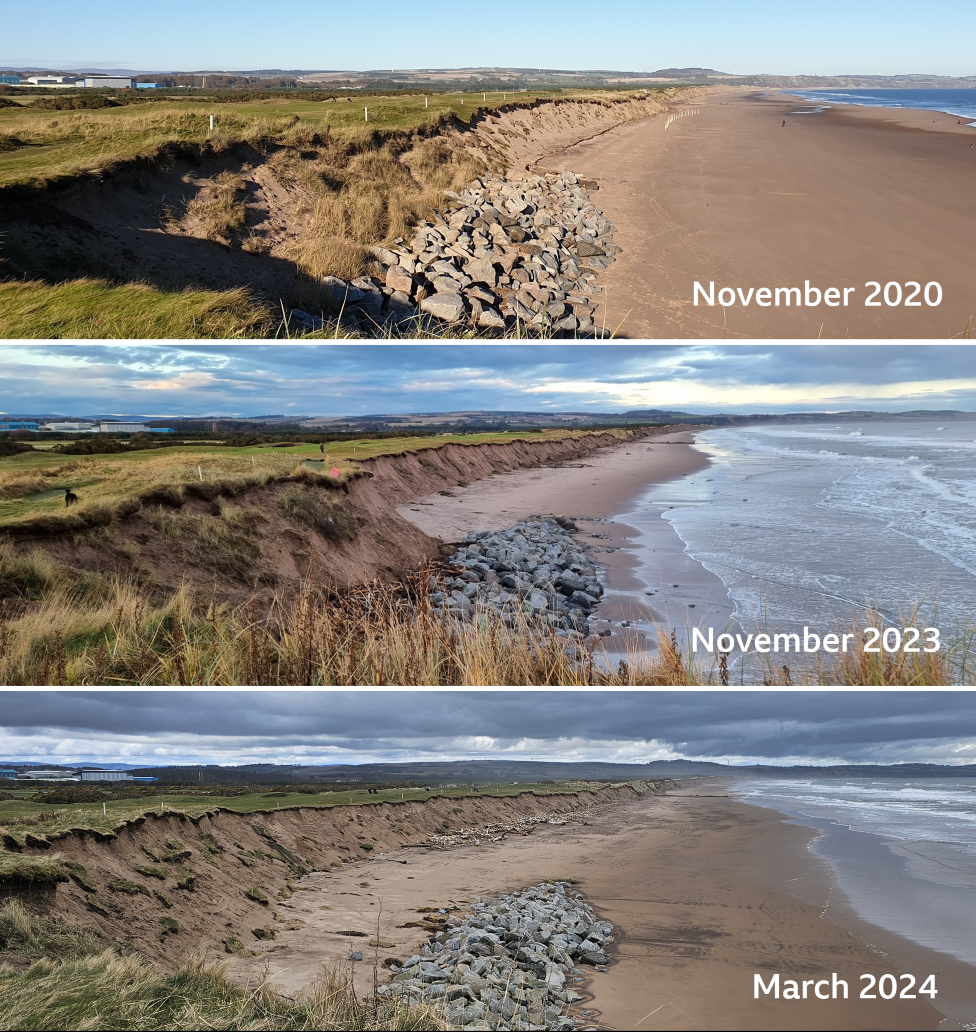
Montrose has quickly lost many metres of the links course
It is a similar story down the coast in Montrose, which boasts the fifth oldest golf course in the world.
But former club chairman John Adams fears it is only a matter of time before the dunes that it sits on are washed away.
“It was envisaged we’d lose maybe one metre, maybe 1.5 metres, per year but we’ve just lost seven metres in one year,” he said.
"If we lose another seven metres it is on the middle of the fairway. In a decade it is gone and, if it keeps coming, it will go into the town.
“The third tee was moved in 2017 but that has already gone. What’s happening here is literally reshaping the map.”
An allocation of about £500,000 has been made for defences this year but the local council has advised the course to start what they call a "managed retreat".
Desperate situation
Investigations carried out in 2021 found that 109 golf courses in Scotland are suffering the effects of coastal erosion or expect to be in the near future.
Martin Hurst, from the University of Glasgow, has been studying the changing coastline and knows the threat rising sea levels are posing to the game Scotland gave to the world.
"Scotland’s erodible coastline is being eroded more than we had first observed,” he said.
He points to Montrose as a good example of just how desperate the situation is.
“If the current worst case scenario with rising sea levels is realised, we’re expecting something like 85 metres (279ft) of erosion there by 2050.
“That seems to be our current trajectory.”
"If that was to happen, the golf course would no longer exist and the managed retreat would become a forced surrender to the sea."
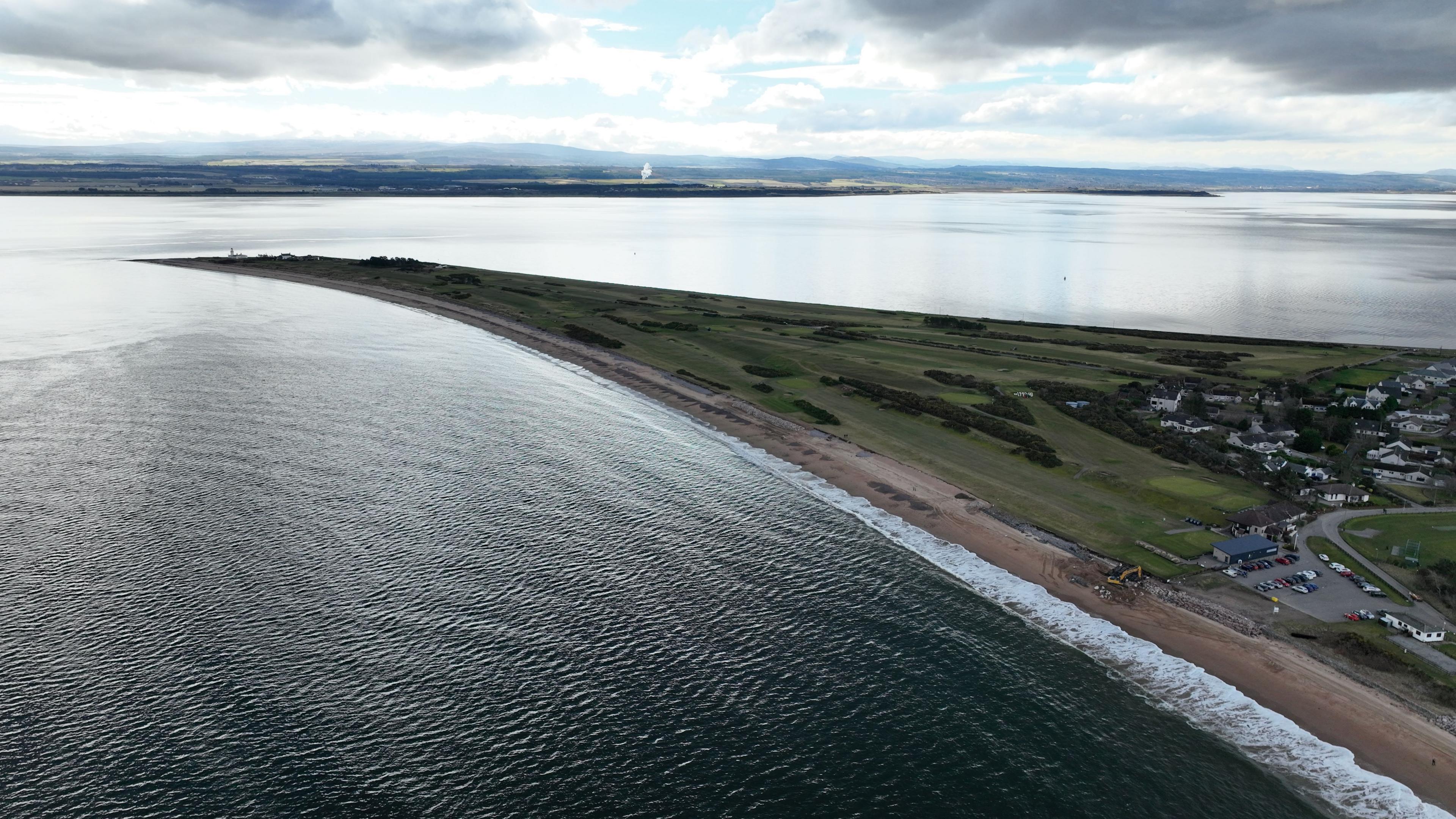
Fortrose is a championship golf course and a major tourist attraction
Fears then turn to the town itself and other towns like it.
“Around all of Scotland, we think that about £1.2bn of assets are at risk near the coast,” Mr Hurst said.
“That’s infrastructure but also local communities that live near the coast, so we need to take these threats seriously and think how best we can adapt, mitigate and manage, moving forward.”
In 2020, world golf body The R&A commissioned a report to look at the effects of climate change on the sport.
The Coastal Change Action Plan is a key component of the governing body’s Golf Course 2030, external action plan.
It was established in 2018 as an industry initiative to consider the impact of the changing climate, resource constraints and regulation on golf course condition and playability.
The study will also look at opportunities for blue carbon - the term for carbon captured by the world's ocean and coastal ecosystems - and the role of long-term storage in Scotland’s shoreline habitats surrounding golf courses.
Scientists believe protecting these environments could reduce greenhouse gases that would otherwise contribute to global warming.
The findings of the report are due sometime this year.